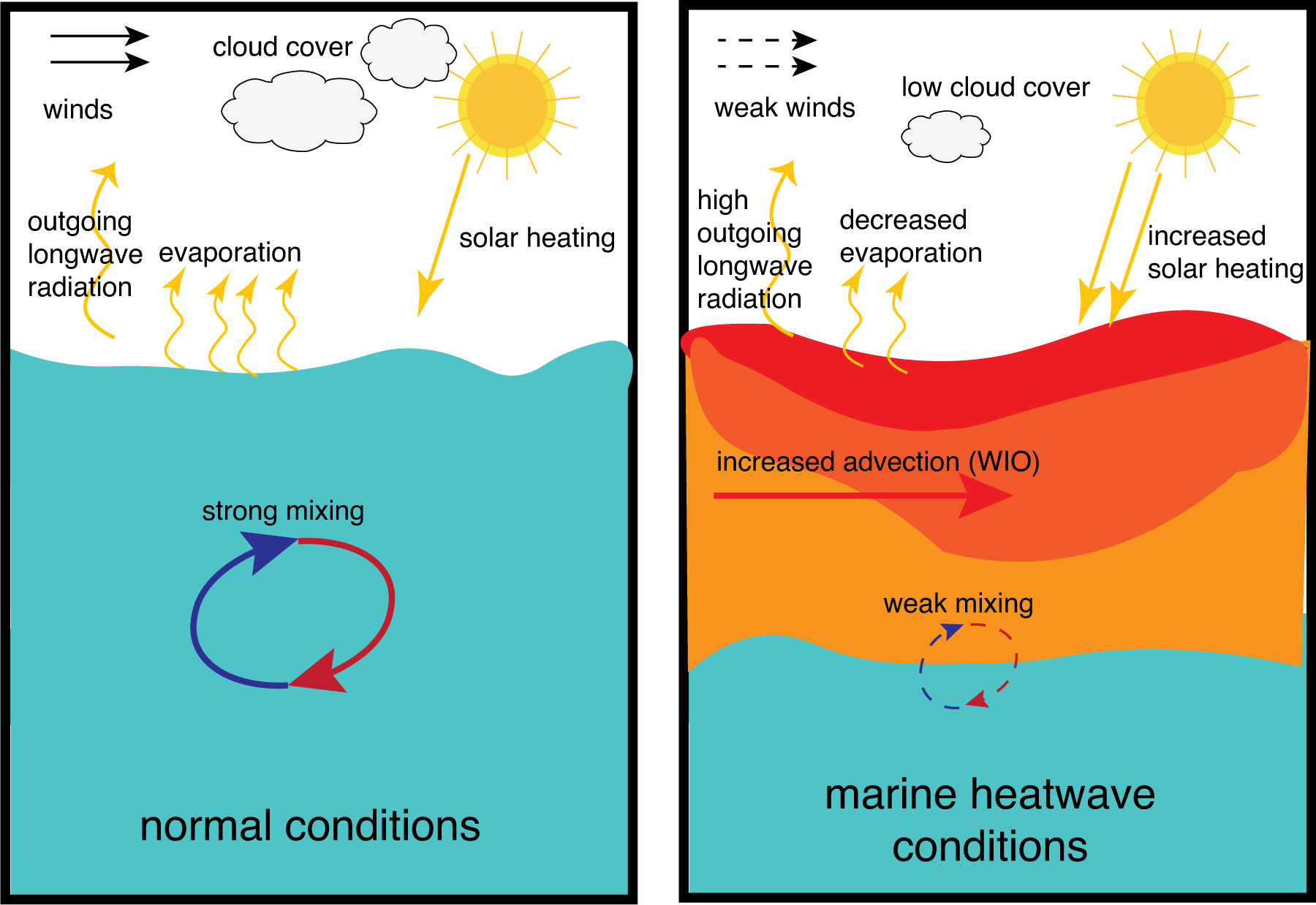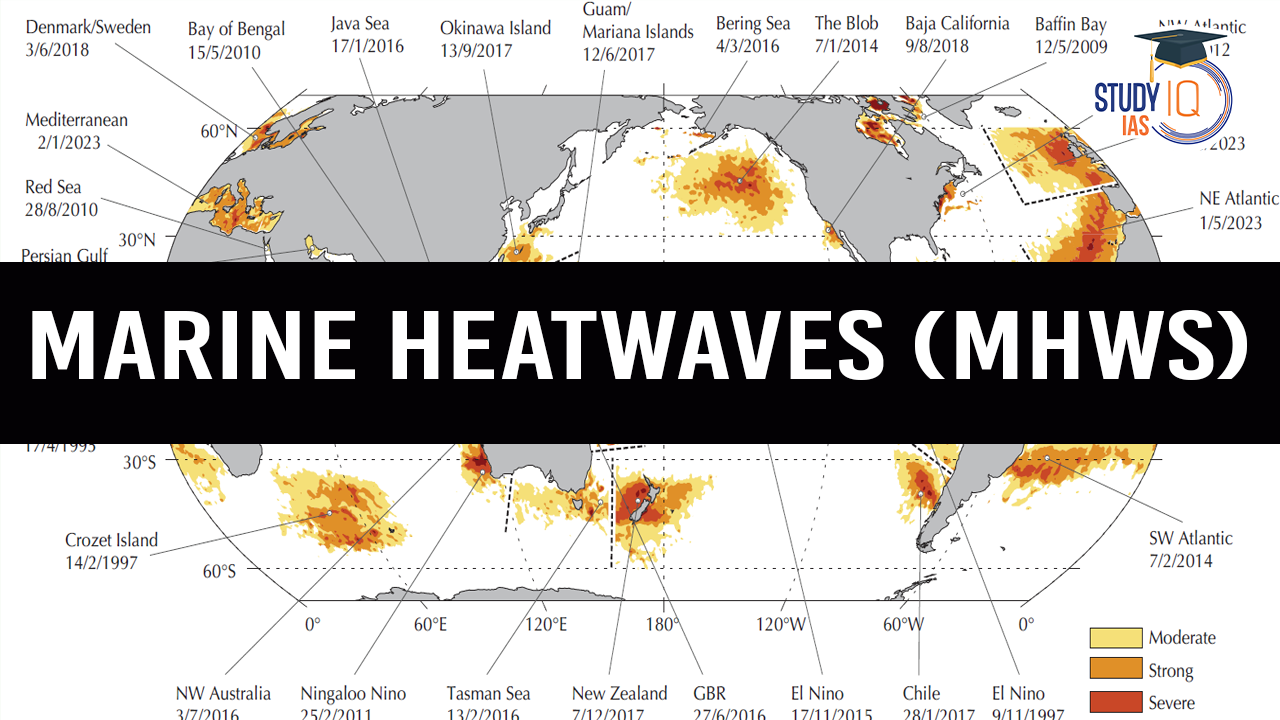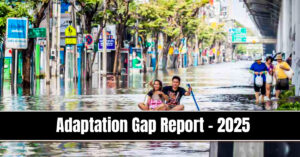Table of Contents
Context: The MHWs off the coast of Western Australia (WA) in January 2025 led to the death of over 30,000 fish according to a study conducted by the non-profit group Climate Central.
What Are Marine Heatwaves (MHWs)?
- MHWs are extreme oceanic heat events, where sea surface temperatures (SST) rise 3-4°C above normal for at least five days.
- They can last for weeks, months, or years, affecting large marine ecosystems.
- Studies show MHWs have become twice as frequent since 1982, with a 50% increase in duration over the past decade.

Reasons behind MHWs in this zone
- It is primarily driven by Eddy currents.
- Eddy currents are large, swirling loops of water that transport warm or cold water over long distances.
Why Have Marine Heatwaves Intensified?
Climate Change
- 90% of global warming’s excess heat is absorbed by oceans, raising SST.
- Since 1850, global SST has risen by 0.9°C, with 6°C of this occurring in the last 40 years.
Projected Increase in MHWs
- At 5°C warming, MHWs could be 16 times more frequent.
- At 0°C warming, they could be 23 times more frequent.
Western Australia’s Increasing Anomalies
- September 2024: SST anomalies were 2°C above normal.
- January 2025: SST anomalies crossed 2°C multiple times, worsening the MHWs.
Impact of Marine Heatwaves
Ecosystem Disruptions: These events cause habitat destruction due to coral bleaching, seagrass destruction, and loss of kelp forests, affecting the fisheries sector.
- Eg., An underwater survey showed that 85% of the corals in the Gulf of Mannar near the Tamil Nadu coast got bleached after the marine heatwave in May 2020.
- Kelp Forest Destruction: Kelps thrive in cool waters, and MHWs destroy these habitats, impacting marine biodiversity.
- Coral Bleaching: Warmer waters stress corals, reduce their reproduction, and make them vulnerable to diseases.
- 2024 Great Barrier Reef Bleaching: Reached “catastrophic” levels due to MHW-induced stress, marking its seventh mass bleaching event.


 UNEP Adaptation Gap Report 2025: Running...
UNEP Adaptation Gap Report 2025: Running...
 National Crisis Management Committee (NC...
National Crisis Management Committee (NC...
 APEDA Facilitates First-Ever Air Shipmen...
APEDA Facilitates First-Ever Air Shipmen...




















